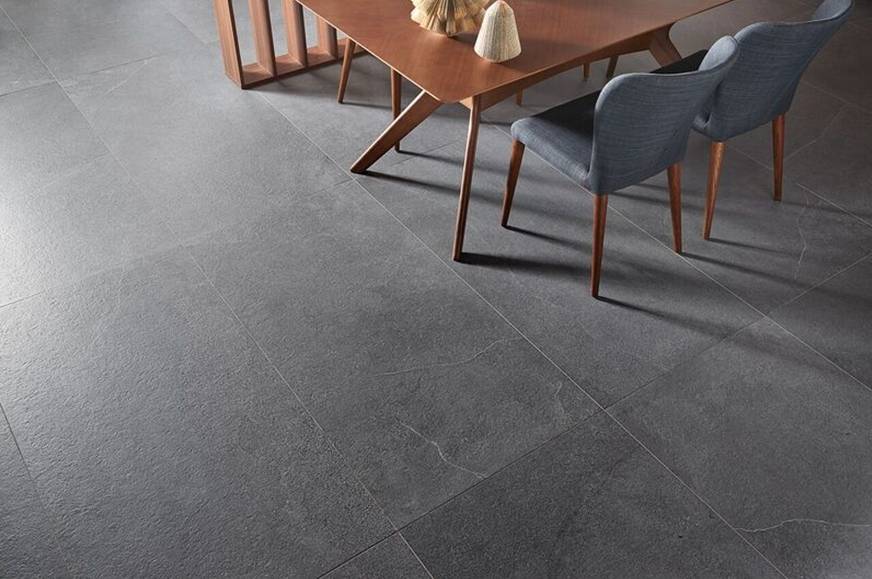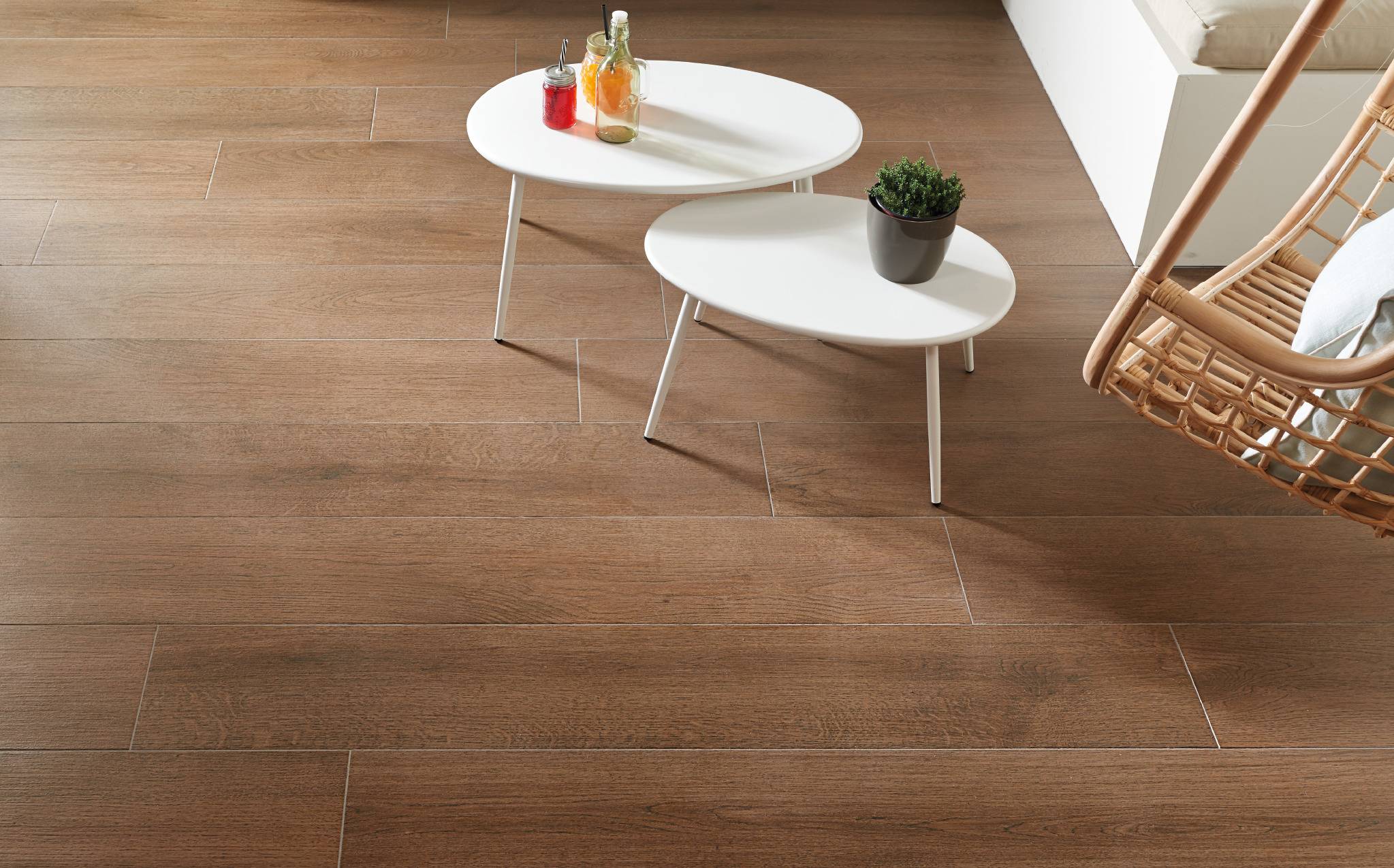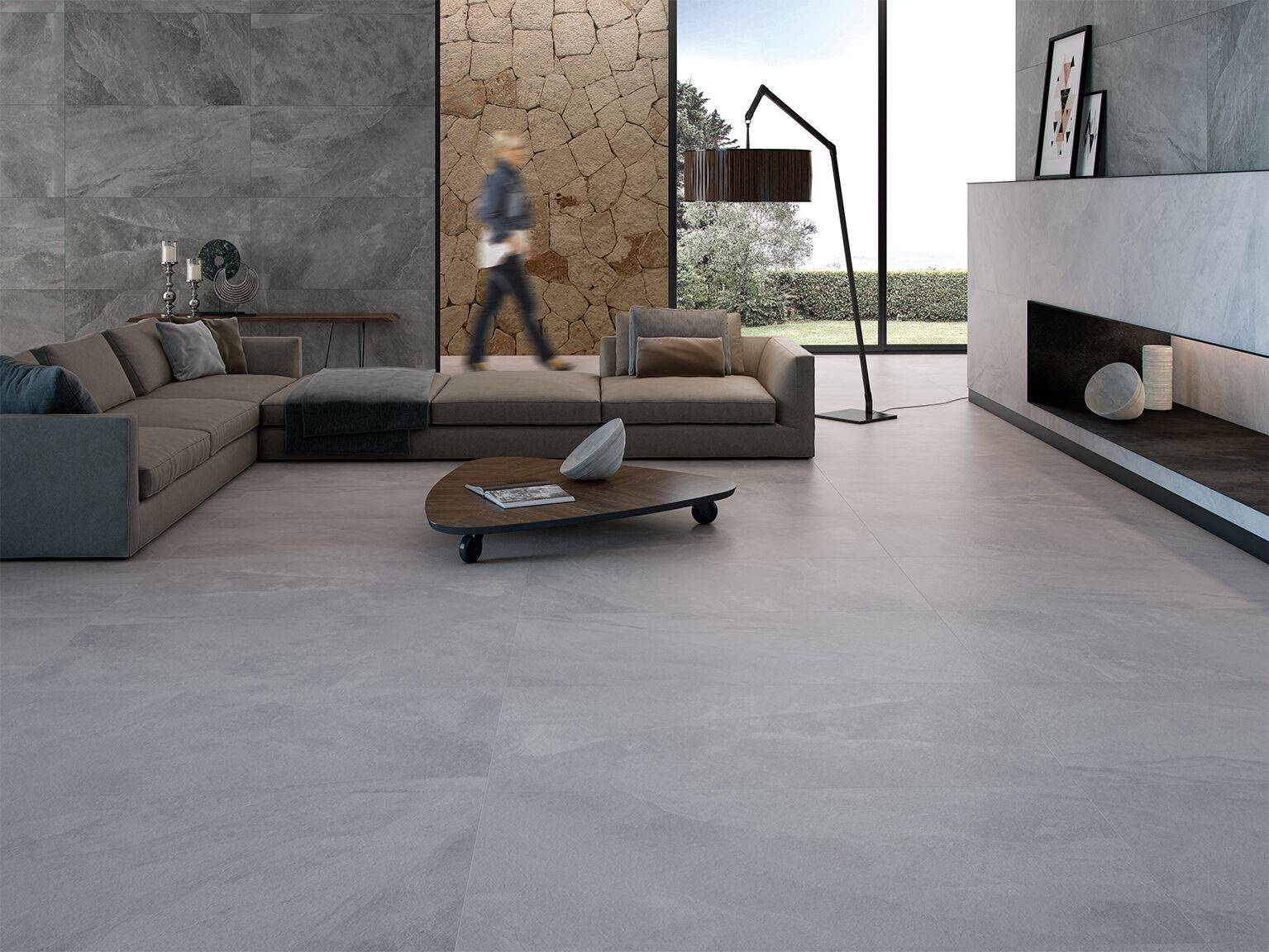Why choose rectified tiles?
You’re about to refurbish your home or have finally managed to buy the house of your dreams and you’ve chosen porcelain tiles for the lounge and kitchen, but now you’ve got to decide whether to opt for rectified or non-rectified ones.

In a previous blog, we explained how tolay large-format porcelain tiles:
On this occasion, to simplify the decisionfor you, we’ll tell you all you need to know about rectified porcelain tiles.Conventional and rectified porcelain tiles are manufactured exactly the sameway. That is, they are basically the same top-quality, durable porcelain tiles.Once the tiles have been manufactured, rectified ones undergo an additionalprocess in which high-pressure water-jet cutting equipment is used to cut roundthe whole perimeter so that the edges are all identical and absolutelystraight. This is fundamental in ensuring their final appearance.
The advantages of rectified tiles:
-They areporcelain tiles. This is their main advantage since they are easy to clean andvery long lasting.
-Continuoussurfaces. Because they are rectified porcelain tiles, no tile joints are needed,allowing for the creation of continuous surfaces.
-Diversity. Youcan choose from a multitude of different rectified models, formats and looks.At Keraben Grupo we offer a wide variety of finishes, including wood, marble orstone-effect models. Rectified tiles can be used in settings of all kinds.

Howto lay rectified tiles
1) With rectified tiles, it isimportant to be absolutely familiar with the substrate on which they will belaid. Why? Because rectified tiles leave no room for manoeuvre, since the ideais that they will cover the wall or floor surface in continuous style, withbarely any space between one tile and the next.
2) The joint betweenthe tiles will be very small. Conventional porcelain tiles need a tile jointthat can range from 4.5 or 6 mm to 10 mm depending on the size of the tiles. Rectifiedtiles will only have a tile joint of between 1 and 1.5 mmso that they can be grouted and have room to expand. Preferably they should be grouted with resinor liquid latex enriched grouting material. Both are equally long-lasting anddo not turn yellow as they age.
3) As always, the most important factor is the tile expert who lays theporcelain tiles. Why? Because the secret of long-lasting tiles is to have laidthem properly. Hence an expert must always do the job. And, equally important,good bonding material must be used to ensure a firm bond, laying any cut tileswith the cut edges against the wall so that they can be hidden under theskirting.








